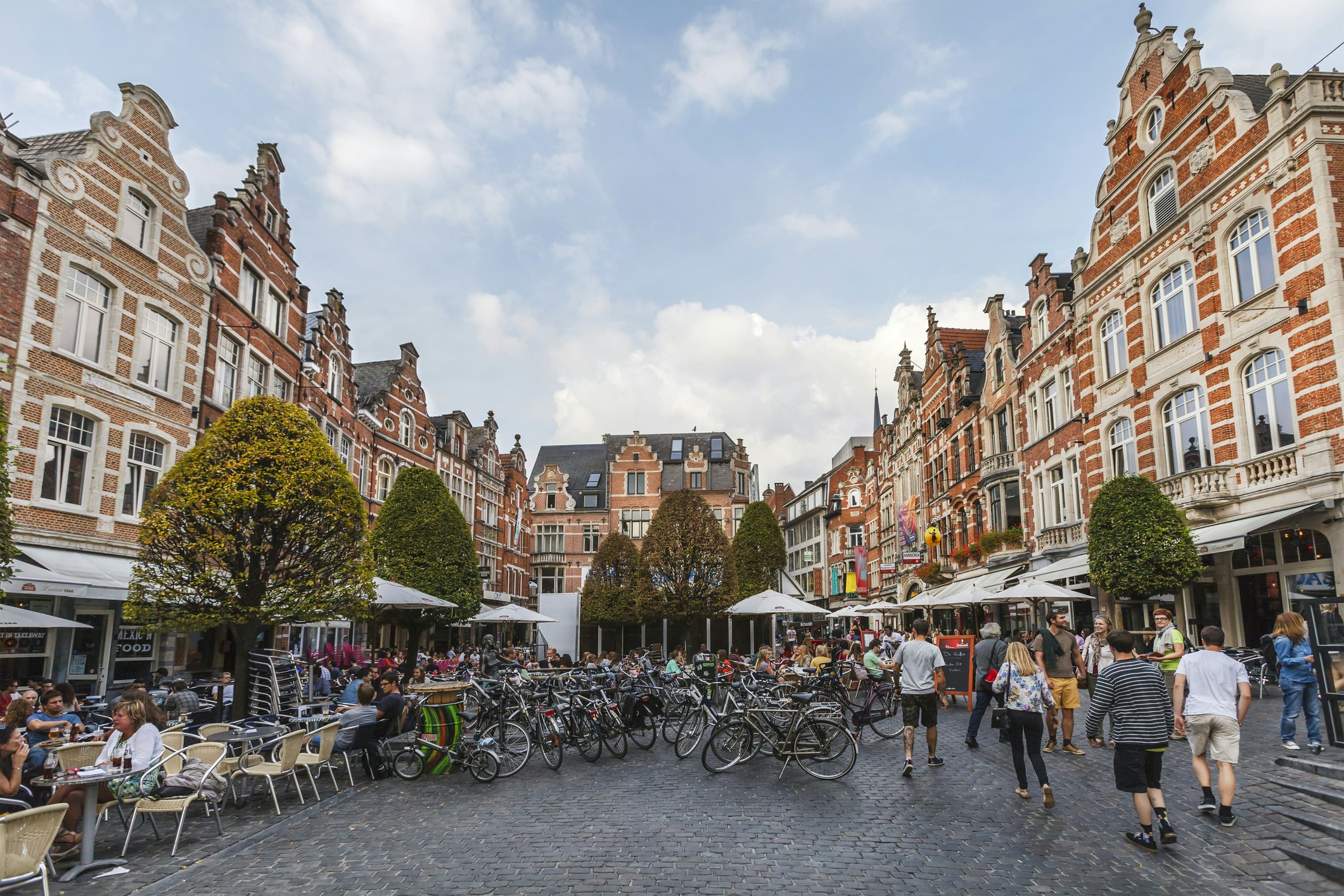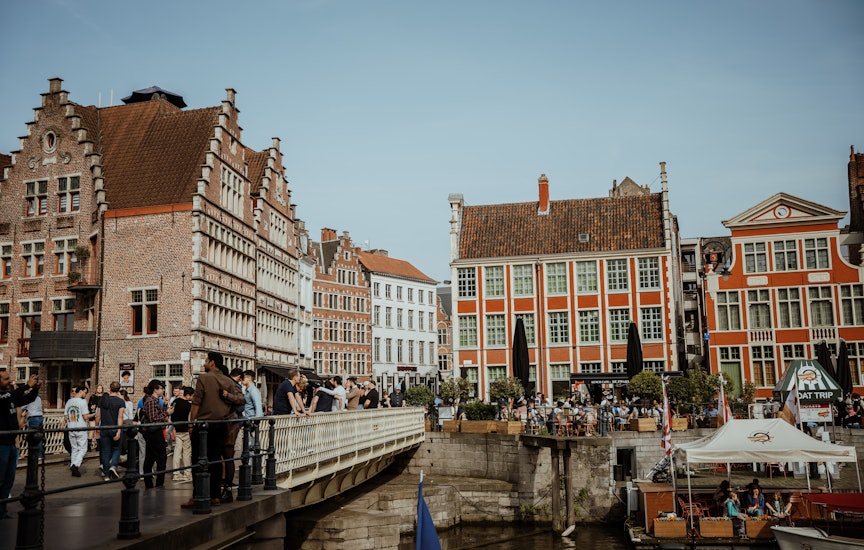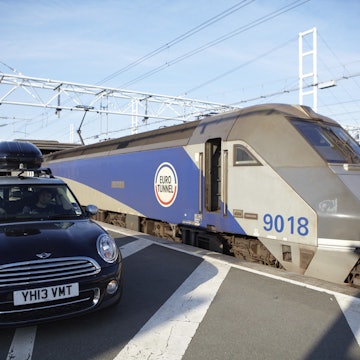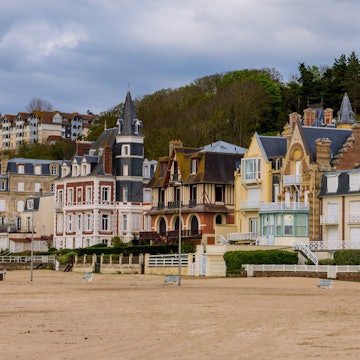

Graslei Harbour, Ghent. tunart/Getty Images
Belgium is petite. Fall asleep on a Paris to Amsterdam train and you could miss it all together – well, maybe, if you’re a heavy sleeper. But crammed into this fascinating little land are some of Europe’s great medieval cities (including Bruges, Ghent and Antwerp), the EU capital Brussels and no less than three national languages.
Fabulous chocolate, brilliant beers and baffling bureaucracy are all part of the mix in a place with a surprising range of cultural and practical quirks that are well worth knowing about before you arrive. Here are our top tips on local etiquette in Belgium.
1. Endives are more popular than Brussels sprouts
Given the name, you might imagine Brussels sprouts heavily featured on many Belgian menus. Although sprouts were first cultivated in 13th-century Flanders, Belgians themselves more likely see endives as their most archetypal national vegetable.
Known as witloof in Dutch and chicons in Belgian French, the classic recipe wraps them in ham and slathers them in white sauce. However, over the last 30 years, a lack of interest in this labor-intensive farming practice has seen Belgian endive production nose dive. Some fear that the popular vegetable might become virtually extinct within a generation, but scientists are working hard to save it.

2. You'll pay for water but you don't need to tip
Belgium has super standards of public health, a socialized medical system that's the envy of neighboring countries and yes – despite occasional scares – most tap water is completely fine to drink.
But that’s not what you’re likely to hear if you have the bare-faced temerity to ask for eau du robinet in a restaurant. Eateries happily supply free bread, and there’s never a requirement to tip Belgian serving staff, but for H2O you’re expected to stump up for a bottle of mineral water. A beer is often cheaper.
3. Carry coins: it might cost to use the bathroom
Cash usage is plummeting in Belgium, and most places now expect plastic or phone money. But not everywhere. It’s especially worth keeping a few euro coins in your pocket in case you need to use older public toilets.
Yes, unfortunately, some motorway services still have a pay table guarding the facilities. Even some bigger restaurants charge you to go – whether or not you classify McDonald's as a “restaurant”, its central Ghent branch requires payment.
4. Cash payments are rounded up to the nearest €0.05
Unlike in the neighboring Netherlands, €0.01 and €0.02 copper coins are technically still legal tender in Belgium. However, in reality, you’re unlikely to find any because from 2019 Belgian merchants must round up or down for all in-person cash transactions to the nearest multiple of €0.05.

5. ATMs are hard to find
As cash usage wanes, so does the number of ATMs you’re likely to find. A spate of heavy-handed robberies has further reduced the attractiveness for banks to site ATMs in their exterior walls. So, in many Belgian urban centers, if you want cash, you’ll need to locate a branch of Bancontact, essentially a shop containing “bank-neutral” cash machines.
6. Eat frites not French fries
You may have learned about people in Holland putting mayonnaise on their fries from the 1994-movie Pulp Fiction, but it's a custom that extends beyond those borders. The idea is alive and well in Belgium where there’s a whole range of flavored mayo-based sauces to choose from when you order a portion of friets/frites from a frituur (fry shop). If in doubt, go for mildly spicy Andalouse and have it on the side rather than drenching your marvelously triple-fried beauties.
Most importantly, don’t even think of calling them “French Fries” – one thing that unites Flemish and Francophone Belgians is that it’s Belgium, not France, that really knows how to fry potatoes.

7. Cafes are more for beer than coffee
Belgium shares the third-wave caffeine passions that have swept the globe: many a maestro barista plies their trade here and there are some great urban roasteries. However, while a traditional Belgian cafe will serve you a decent coffee (typically with a square of chocolate or speculaas biscuit), don’t expect a flat white or a cold-drip brew.
Belgium’s classic cafes are, in reality, far more like pubs than coffee houses, with hardwood chairs, wooden wall paneling, brasswork and mirrors, though in a downbeat less showy fashion than a French brasserie. And the main point of a cafe is to pour beers. If you just order a bière (French) or pintje (Flemish) you’ll get a well-poured 25cl lager.
But any cafe worth its salt will also offer a range of alternative brews – typically in bottles – many with alcohol levels approaching those of wine. Some beer-bars have a book-thick menu of options and each should be served in its own specific glass. For powerful, well-balanced brews it’s hard to beat the various Trappist beers, still brewed by monks. Some connoisseurs purport to love the sour, spontaneously-fermenting lambics.
If you don’t mind looking like a tourist, try ordering a Kwak, which usually comes in an Instagram-worthy round-bottomed glass held on a wooden stand like it’s part of a chemistry experiment.
8. Driving under the influence of alcohol is not acceptable
While in a Belgian cafe, if someone asks you “Are you Bob?” that’s not because they think they know you. Bob, in Belgium, is a shorthand for the designated driver – the person in a group who has to stay sober and spurn that fabulous selection of beers.
Well into the noughties driving a vehicle while drunk was seen as a minor misdemeanor – police sometimes urged the inebriated to hurry home rather than locking them up. However, things have changed radically in the last decade and the once-repeated Belgian maxim “if I wasn’t drunk I’d be too scared to drive” is no longer considered amusing.
Along with much of Europe, the blood alcohol limit is 50mg per 100ml of blood (0.05%), which could be reached just drinking one strong beer.
9. When in doubt, speak English
Traveling anywhere it’s polite to speak the local language, right? Well yes if you know what “local” means. In central Belgium, that can be tricky. Bureaucratic borders between Dutch-speaking Flanders, French speaking Wallonia and officially bilingual Brussels are essentially invisible. Then there’s also a German-speaking area of Wallonia too.
In general, speaking the wrong local language – maybe speaking French in parts of Flanders – can be seen as more insensitive than simply using English, or you just won’t be understood at all. Either way, especially in bigger cities, it’s best to just go with English.

10. French, Belgian French, and Walloon are all different languages
Wallonia is the French-speaking half of Belgium, but the French spoken there has some peculiarities. So, if you speak the language of Voltaire, be prepared to say “septante” for 70 and “nonante” for 90… though not “octante” for 80 – that’s just too Swiss.
Don’t assume that this means you’re speaking Walloon – that is essentially a different language (with several highly variant dialects). These days Walloon is mostly heard only at folkloric festivals (like Les Macralles night of witches at Vielsalm) or at puppet shows (most famously featuring Tchanchès, the mascot of Liège).
For comic effect you might also spice your Belgian French with words of Bruxellois, the street patois of the capital which traditionally spices French with some fabulous hybrid words of Dutch origin to special effect. For example, un zieverer is a practical joker prone to telling deliberately exaggerated tall tales, and en stoemelings means doing something furtively, particularly a cash transaction in pursuance of the age-old Belgian passion for tax avoidance. Both terms have a humorous rather than negative connotation.
11. Place names on road signs are confusing
Where the language divide is likely to prove most baffling is when you’re driving. Many Flemish towns have entirely different Francophone names and vice versa, and it's common to find that they'll use their own version on regional road signs. Particularly baffling for tourists are Bergen (for Mons), Louvain (for Leuven) and Luik (for Liège).
Should you approach Jodoigne from the north it’ll be signed Geldenaken. Even foreign cities aren’t spared: in Flanders signs for Lille (France) might say Rijsel while in Wallonia, Aachen might be written Aix-la-Chapelle.















